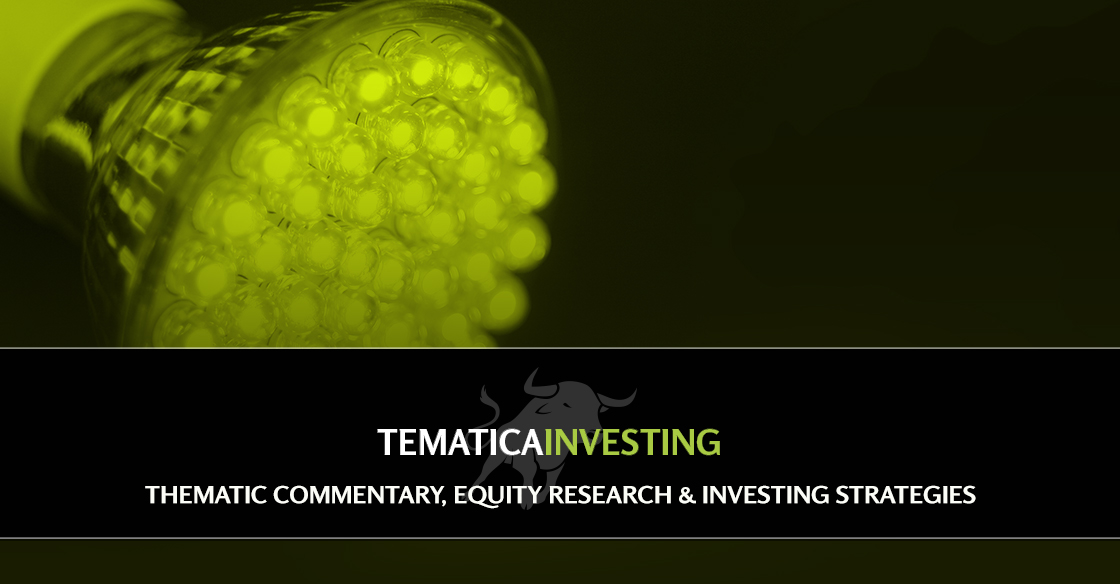Boosting Our Price Target on this Disruptive Technology Company Again
Last night shares of Disruptive Technology company Universal Display (OLED) popped more than 10% in after-market trading as the company delivered substantially better than expected December quarter results and instituted a new dividend program. Granted the quarterly dividend of $0.03 per share equates to an extremely low dividend yield, but the program, which is expected to include regular quarterly dividend payments, is a signal that Universal sees enough cash generation to invest in the business and return capital to shareholders as the organic light emitting diode market expands.
- Even though we recently boosted our price target for OLED shares, following last night’s report we are doing so once again and raising our price target over the next year to $85 from $80.
Details Behind Universal Display’s Performance
For the quarter, Universal reported EPS of $0.55 per share, $0.14 ahead of consensus expectations on revenue that rose 20% year over year to $74.6 million, besting expectations of $69 million for the quarter. Breaking down the company’s revenue, licensing fees grew 27% year over year to $43.6 million (58% of revenue), material sales rose 5% to $29.2 million (39%) with the remainder generated by Universal’s contract research business (2%). Simply put, we see licensing business and materials business responding to the rising industry demand for organic light emitting diode displays, a phenomenon of which we are still in the early innings.
As expected, on the earnings call, Universal’s management team trotted out a number of examples of new products and market opportunities that are increasing demand for organic light emitting diode displays, which in turn drive demand for the company’s materials and licensing businesses. We see those examples, which included smartphones from ASUS and Huawei, TVs from Panasonic, LG, automotive lighting applications (tail lights, interior lighting, indicator lights and displays), augmented reality, virtual reality, as solid reminders that organic light emitting diode display adoption spans far more than just Apple (AAPL) and the next generation iPhone.
If we were to be nit-picky, the only issue to be had with Universal’s earnings report was that management guided 2017 revenue in line with expectations. Coming into last night’s earnings report, consensus revenue for 2017 stood at $242.7 million across just over a handful of analysts and Universal’s guidance put revenue at $230-$250 million. Baked into that company guidance are two $45 million royalty payments from Samsung that land in the second and fourth quarter. In our view that guidance seems conservative, but we also recognize the biggest swing factor in the company’s revenue is not so much new capacity additions, but when that capacity moves past installation and testing, and into active production.
Given expanding capacity from a number of companies including Samsung, LG Display, AUO Optronics, Japan Display, Sharp and China BOE Technology, which is reflected in the order book at capital equipment company Applied Materials (AMAT) and its competitors, there is ample confirmation of expanding capacity over the next few years. Where it gets tricky is predicting the quarterly timing of productive capacity coming on stream. Given our long-term investment horizon, we’re inclined to sit back and be patient as the continued step up in capacity likely means an expanding business at Universal Display and boosting our price target on the shares along the way.
Earlier this week, shares of Applied Materials joined Universal Display shares on the Tematica Select List, and we continue to rate AMAT shares a Buy with a $47 price target.

